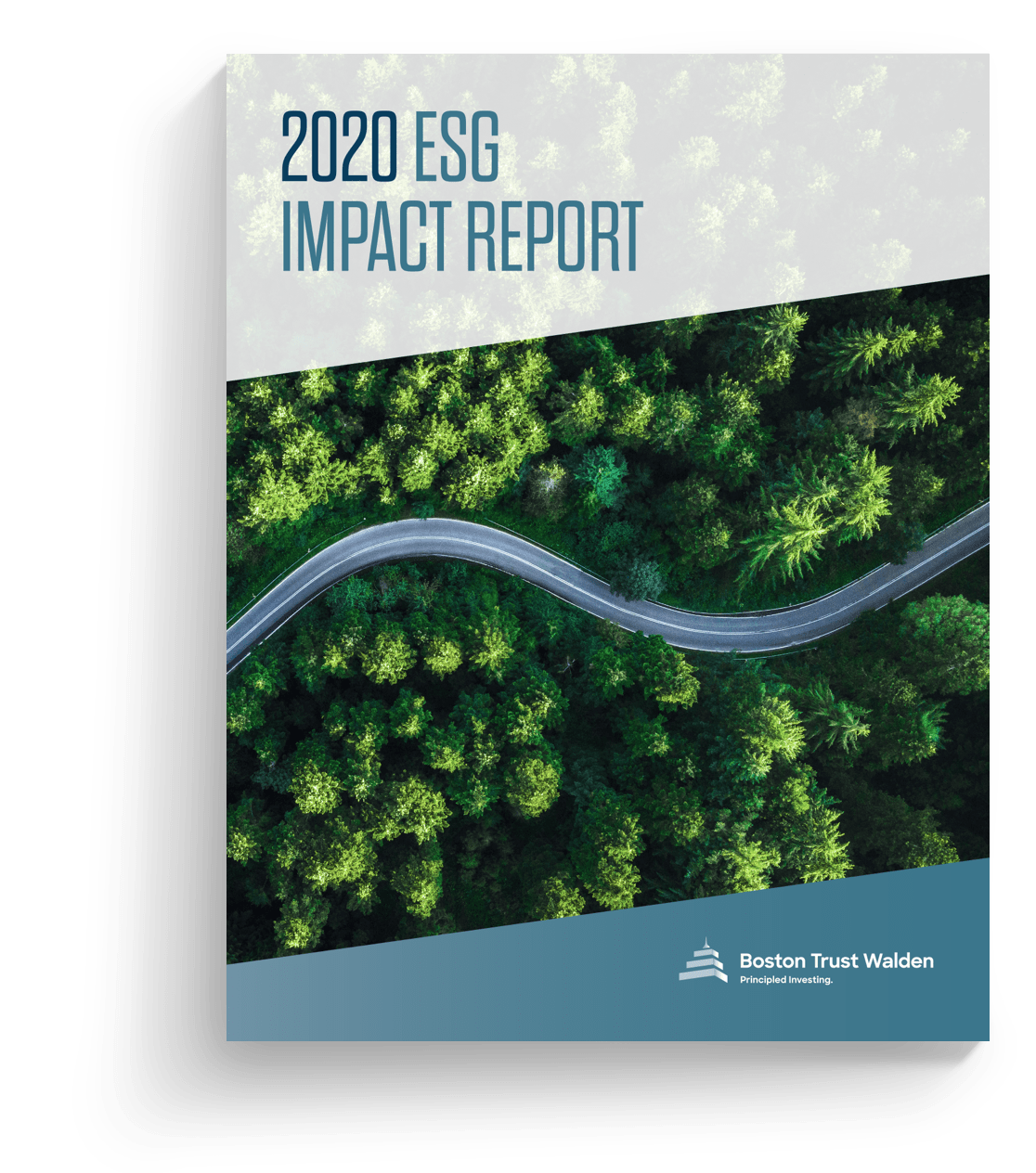
Never has the need for impact investing been more apparent than in 2020.
We believe the integration of environmental, social, and governance (ESG) considerations is critical to managing risk and producing attractive, long-term investment returns. We also recognize our responsibility to encourage improved ESG practices at the companies in which we invest. In this 2020 ESG Impact Report we share examples of actions taken to accelerate progress on climate and equality, as well as the governance mechanisms that underpin it all. We also offer industry-leading measurements and disclosure on the reach and impact of our initiatives across investment strategies for all clients.
Download Report
Report Highlights

2020 Impact
During 2020—a year in which we faced a global pandemic, a deepening climate crisis, and a reckoning over persistent and pervasive inequality—we engaged nearly three-quarters of the companies held across investment strategies.

Workforce Composition
Of the nearly 100 companies we engaged on board and workforce composition diversity, 36 companies added 46 diverse directors and approximately ten more committed to include people of color and women in board candidate pools. Improved workforce composition disclosure is also underway at approximately one dozen companies.

Climate Lobbying
Our contributions toward positive, policy-enabled climate actions continue. In partnership with investors and civil society organizations, we encouraged more than 50 companies to strengthen oversight of their public policy advocacy and to outline how their climate priorities align with their trade associations.

Sustainable Development Goals
Our active ownership initiatives touched 10 of the 17 Sustainable Development Goals this year, with strong results across those relating to equality, climate, and governance.

Shareholder Resolutions
We withdrew 50% of our resolutions after reaching an agreement with the company. Of those that went to a vote, average shareholder support was 27%.

Carbon Footprint
The weighted average carbon intensity of our investment strategies is significantly lower (better) than their respective benchmarks.
